Top Tier CPU Air Coolers Q3 2015: 9-Way Roundup Review
by E. Fylladitakis on July 6, 2015 8:00 AM ESTThe Logisys (DeepCool) Gamer Storm Assassin
Founded back in 1996, Deepcool (Logisys in the North American markets) is one of the oldest CPU cooler manufacturers. They are not a very well known brand name because they primarily focused on server and OEM coolers, not retail products. However, their recently launched "Gamer Storm" range comes to change that, with direct focus on retail products for advanced users. Deepcool provided us with their "Assassin" cooler for this review, the highest performance CPU cooler they currently market.
Deepcool supplies the Assassin in a very tall, large cardboard box with a relatively simple, dark artwork theme. Everything is exceptionally well packed inside the box, with everything protected inside secondary boxes and layers of polyethylene foam. The bundle consists of the hardware necessary for the mounting of the cooler, a fan power cable splitter and a Molex power adaptor, a tube of quality thermal grease, a metallic case badge and six wire clips for up to three cooling fans.
The Deepcool Gamer Storm Assassin is a very large and heavy dual tower cooler. It weighs more than 1.5 kg with both fans installed, making it one of the heaviest CPU coolers in existence. Each tower consists of fins forming a jagged saw tooth formation on one side and a complex geometric pattern formed of tetrahedrals and squares on the other side. Strangely, the towers are physically identical, yet they are reversed, meaning that one fan will be facing the jagged side of the fins and the other the complex tetrahedral-square pattern. This makes us unsure whether that strange pattern is for aesthetic purposes only or if it actually improves performance in any way. There are no openings for a screwdriver, therefore the center fan needs to be uninstalled during the installation/removal of the cooler. Furthermore, a Philips PH2 or a slotted 3.2 mm - 4 mm screwdriver with a shank longer than 150 mm is necessary. There is no tool provided in the box, therefore do make sure that you have an adequately long screwdriver available.
Deepcool provides two cooling fans alongside the Assassin, one 140 mm and one 120 mm fan. The 140 mm fan is to go in between the two towers, while the 120 mm fan on either side of the cooler. The company is obviously not using two 140 mm fans in order to provide some clearance to the RAM slots, which would be completely blocked if a 140 mm fan were to be mounted at the front side of the cooler.
The fans come from Deepcool's own UF range, have dual ball bearings and anti-vibration frame covers. A strange fact is that the 140 mm fan is faster than the 120 mm fan, with a maximum speed of 1400 RPM and 1200 RPM respectively. Deepcool is the only company that follows this approach, as the rest of the manufacturers with asymmetric fan setups seem to prefer the opposite, in order for both fans to have about equal airflow.
The base of the Assassin is very long, with eight 6 mm heatpipes running through it. This is another strange approach as there is no CPU long enough to make full contact with a base this long. It does not mean that the heatpipes near the edges of the base will be useless but it is unlikely that they will function at maximum efficiency. Both the copper base and the heatpipes of the Assassin are nickel plated, with the contact surface polished down to a perfect mirror finish.


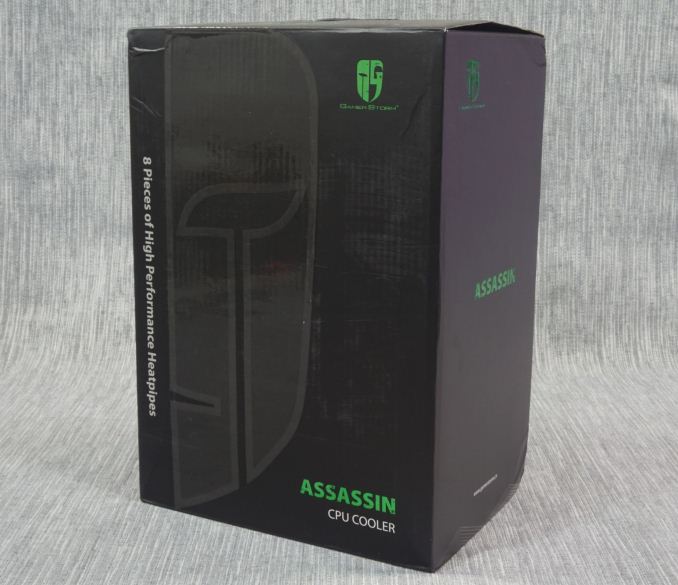
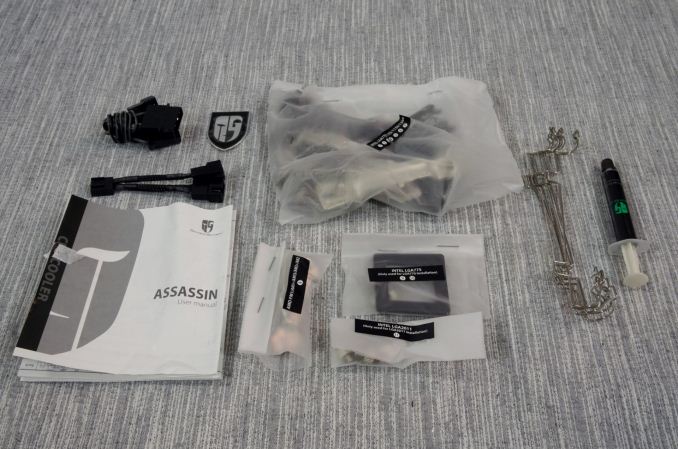
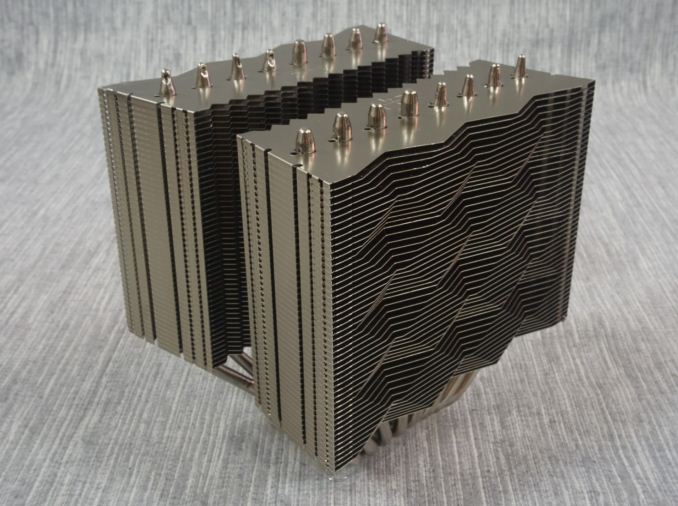
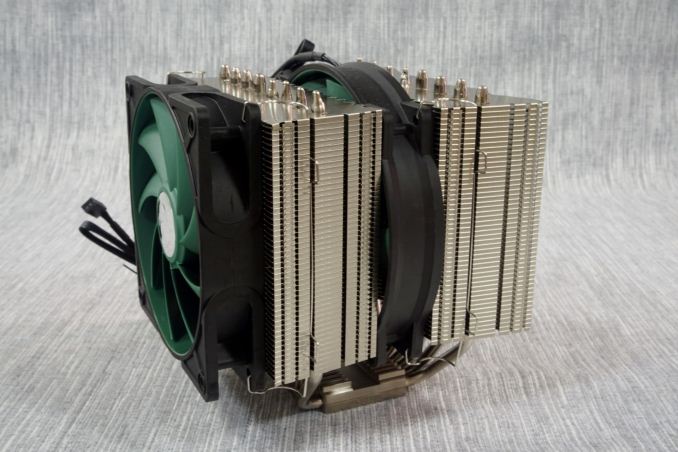
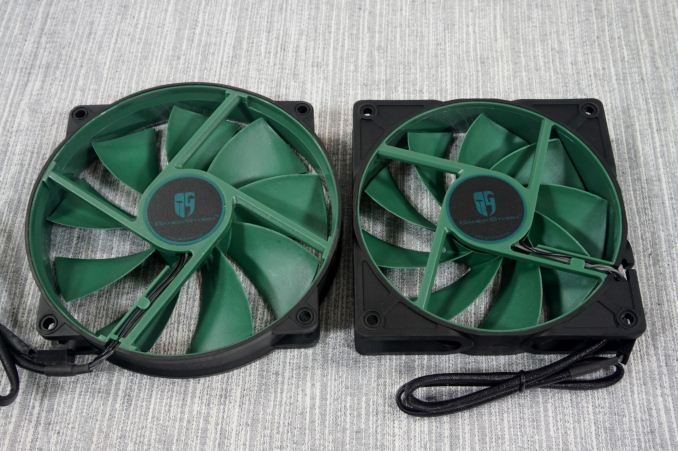









135 Comments
View All Comments
mrvco - Monday, July 6, 2015 - link
I agree. It would be helpful to know how the 212 compares both with regards to cooling and quietness. I typically prefer "quieter" so I'd be curious to know how much better the "Dark Rock Pro 3" is than the 212... is it $40+ better?Eidigean - Monday, July 6, 2015 - link
I actually bought the 212 and added a second fan to it, not because it was cheap, but because it would fit between the 2x2 banks of memory on my Rampage IV Formula perfectly (with 1 mm of space on either side) allowing the tall memory heatsinks to rise up, and inconsequentially get a breeze from the fans. The CPU runs nice and cool (and quiet) with a modest overclock.I'd get the offset Noctua NH-D15S if I ever upgrade from a 4 core 3820 to a 6 core 4930K.
effortless - Monday, July 6, 2015 - link
Exactly my thoughts. The Cooler Master Hyper 212 EVO needs to be included in this test, to show exactly what 90% who buys CPU coolers are missing out on, or eventually not missing out on.randomlinh - Monday, July 6, 2015 - link
I'm confused about your complaint. What's wrong w/ the 212? What's wrong w/ saving $10 for 1 deg celcius difference?I genuinely don't know, I have a 212 from almost 4 yrs ago? It works. It's quiet (for the time). The only complaint is if I try to go super small form factor, it won't work.
icrf - Monday, July 6, 2015 - link
If it were only $10 I might agree with you, but when it's half the price, and sometimes a whole lot less, it makes a lot of sense. I looked at the Noctua when I built my 5820 last fall, and couldn't justify the 2.5x price. For $35, the 212 EVO is a great cooler. As good as the Noctua is, it's not two and a half times as good. That's why the 212 is so popular. It's in the proverbial sweet spot.andrewaggb - Monday, July 6, 2015 - link
I agree. I've bought several 212 EVO's and I've been very happy with them. I was mostly looking for something that would run quiet under load (without overclocking) and I think they've been great. I've used some less expensive coolers and they were much worse - so in my opinion it's the cheapest cooler that met my needs.Araemo - Monday, July 6, 2015 - link
Obsession is pretty harsh given the facts... I went and looked up a comparison over on frostytech, and it looks like the Hyper 212 evo is only 2C hotter than the Noctua chosen as the realistic 'best choice'.. for 1/3 the price. Given that my ambient temps change by more than that 2C over the course of a year, 2C is never the stability margin I use on my overclocks.Nfarce - Monday, July 6, 2015 - link
Except that the 212 is not a "premium" cooler. When you start getting into extreme overclocks like I have (i5 4690k @4.8GHz, or a 23% overclock) and into water cooling needs territory, the 212 falls well more than a 2C behind which is where it is on lower level overclocks (5-15%) on my chip.StrangerGuy - Monday, July 6, 2015 - link
Who cares whether if the 212 isn't a "premium" cooler when I can simply buy the 4790K at stock 4.4GHz instead of premium cooling to barely OC a 4690K past a 4790K. You overclockers STILL think there is tremendous value to be had with OCing when the 2500K ship have long sailed.Nfarce - Wednesday, July 8, 2015 - link
According to my benchmark tests in games and applications like Sony Vegas Studio, my overclock to 4.8GHz yields quite a bit of performance increase over the stock turbo of 3.9GHz. Oh and since I was on a budget and game about 80% of the time on that 4690K rig, I justified saving the extra $100 over a 4790K and put it towards a better GPU solution.And yes, I still have a 2500K build as well (not sure what that has to do with the price of ketchup), which used to be overclocked to 4.6GHz on that NH-D14 cooler (it is now relegated to backup duties and running at stock speeds on a Zalman 9700LED cooler). Which, incidentally, roughly equals the performance of my Devil's Canyon chip running at 4.2GHz.